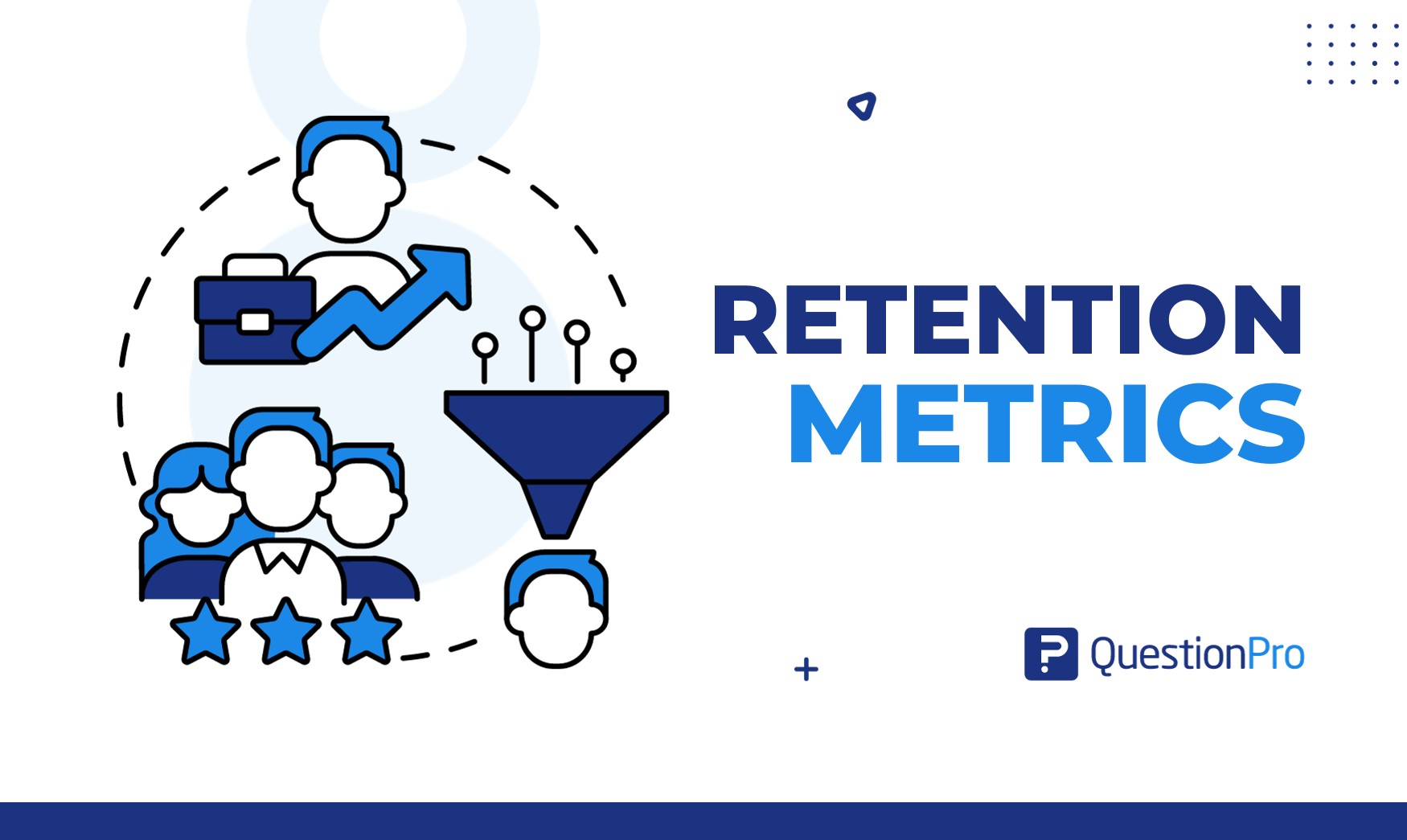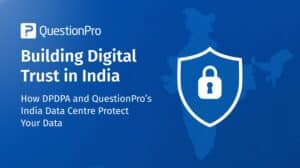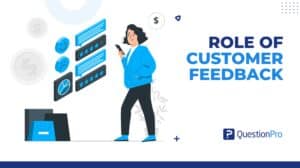
Retaining customers is the key to steadily growing a business. But how can you tell if your plan to keep users is really working? Well, that’s where retention metrics come in.
Keeping track of user retention metrics is crucial for a successful strategy. But it’s not just about monitoring a few numbers. To truly make the most of user retention metrics, it’s essential to recognize which metrics matter the most and understand how to interpret them.
It’s like having a roadmap; you need to know not only where you’re going but also the best routes to get there. In the same way, understanding and interpreting these metrics will guide you toward a more effective user retention strategy.
In this blog, we will learn what retention metrics are and their importance in business growth. We also explore 8 key metrics that you can use to measure your customer retention.
What is Customer Retention?
Customer retention is how businesses keep their customers coming back. It’s like ensuring your favorite customers stay happy and continue using a service or buying products.
Companies do this by providing good service, staying in touch, fixing problems, and sometimes giving special rewards to loyal customers. The goal is to build long-term relationships and keep customers satisfied so they choose to stick with a particular business.
What are Customer Retention Metrics?
Customer retention metrics are like the scorecards businesses use to see how well they keep their customers happy and stick around.
These measurements help companies figure out if their efforts, like special deals or good service, are working. For example, they might look at how many customers stay versus how many leave or how likely customers are to recommend the business to others.
These metrics give businesses a clear picture of their relationship with customers and help them make changes to keep everyone happy and coming back for more.
Why is Customer Retention Metrics important for your business Growth?
Customer retention metrics play an important role in ensuring your business’s long-term success and growth. Here, we’ll explore why paying attention to customer retention strategy is as important as acquiring new customers and how it can positively impact your bottom line.
Build Stronger Customer Relationships
One of the primary reasons why customer retention metrics matter is the emphasis on building strong and lasting relationships with your customers. Happy and satisfied customers are more likely to become repeat buyers and brand advocates.
By measuring customer retention, you gain insights into the effectiveness of your strategies in keeping customers engaged and connected to your brand.
Cost-Effectiveness of Retaining Customers
Reaching new customers can be expensive, involving marketing costs, advertising expenses, and promotional efforts. On the other hand, retaining existing customers is often more cost-effective.
Customer retention metrics help you evaluate your retention efforts’ return on investment (ROI). It allows you to allocate resources wisely and focus on strategies that yield the best results.
Increase Customer Lifetime Value
Customer Lifetime Value (CLV) is a key metric that estimates the total revenue a business can expect from a customer throughout their entire relationship. Retaining customers increases CLV, as repeat business leads to higher revenue over time.
By tracking customer retention metrics, you can identify areas for improvement in your customer experience and loyalty programs. It ultimately boosts the long-term value of each customer.
Positive Word-of-Mouth and Referrals
Satisfied customers are more likely to share their positive experiences with others, leading to word-of-mouth marketing and valuable referrals. Customer retention metrics help you understand customer satisfaction levels. It also enables you to identify and address any issues before they escalate.
Happy customers not only stay with your business but also become advocates. It contributes to the organic growth of your customer base.
Adapting to Customer Needs
The business landscape is ever-evolving, and customer preferences change over time. Customer retention metrics provide valuable insights into customer behavior and preferences. It helps you adapt your products, services, and strategies accordingly.
By staying attuned to your customers’ needs, you can proactively address challenges, innovate, and maintain a competitive edge in the market.
Customer Retention vs. Customer Loyalty
Customer retention rate and customer loyalty are both important concepts in business, but they refer to slightly different things.
Customer Retention Rate
Customer retention rate is a measure of how well a business is able to keep its existing customers over a specific period. It’s like looking at the percentage of customers who continue to buy from a company rather than going to competitors.
To find the retention rate, you usually start with how many customers you have at the end of a certain time. Then, you minus the new customers you got during that time. Finally, divide this by the number of customers you had at the beginning of that time.
Customer Loyalty
On the other hand, customer loyalty is more about the emotional connection and commitment a customer has to a brand. It goes beyond just making repeat purchases. A loyal customer is someone who consistently chooses a particular brand over others, not just out of habit but because they genuinely like and trust the brand.
Loyalty often involves factors like positive experiences, satisfaction, and a sense of identification with the brand.
Check out our new blog on Customer Loyalty Software at QuestionPro. It’s full of helpful info!
Why Both Matter
While they are distinct concepts, customer retention rate and customer loyalty are closely related. Improving one leads to improvements in the other.
A business with a high customer retention rate may have customers who keep coming back, but it doesn’t necessarily mean they are loyal. Loyalty involves a deeper connection, which can contribute to long-term success.
Businesses should aim to retain customers and build loyalty by creating positive experiences and fostering a strong connection between the brand and its customers.
How to Measure Customer Retention?
Customer retention is the lifeblood of a successful business. It’s not just about attracting new customers but keeping the existing ones happy and engaged. Here’s a step-by-step guide on how to measure customer retention effectively:
Define Success
Before diving into metrics and data, clearly define what success looks like for your business. Is it a certain percentage of customers returning? Increased customer loyalty? Knowing your definition of success will guide your measurement strategy.
Identify Key Metrics
Identify the key metrics that align with your definition of success. Common metrics include:
- Customer Retention Rate (CRR): Percentage of customers retained over a specific period.
- Repeat Purchase Rate: How often customers make repeat purchases.
- Churn Rate: Percentage of customers lost over a given time.
Gather Relevant Data
To measure customer retention, you need accurate data. Utilize your customer database, purchase history, and feedback forms. Ensure you have the tools and systems to collect relevant information.
Set a Benchmark
Establish a baseline or benchmark for your chosen metrics. This provides a reference point for improvement. Consider industry standards, but also take into account your unique business circumstances.
Craft SMART Goals
Craft Specific, Measurable, Achievable, Relevant, and Time-bound (SMART) goals based on your benchmarks. For example, aim to increase the Customer Retention Rate by 10% within the next quarter. This makes your goals clear and actionable.
Monitor Regularly
Regularly track and analyze your customer retention metrics. Set up a schedule for data reviews, whether it’s weekly, monthly, or quarterly. Consistent monitoring ensures you catch trends early and can make informed decisions.
Adapt as Needed
Be ready to adapt your strategies based on the data. If you notice a decline in retention, investigate the reasons behind it. Customer feedback, surveys, and market trends can provide valuable insights. Adjust your approach to meet changing customer needs and preferences.
08 Key Customer Retention Metrics
Customer retention is the heartbeat of a successful business. Understanding and measuring key metrics is crucial to navigate this journey effectively. Here, we’ll explore eight essential customer retention metrics in a simple and actionable way.
01. Customer Retention Rate
Customer Retention Rate is a critical metric that quantifies the percentage of customers a business manages to keep within a given period. It is calculated by comparing the number of customers at the end of a specific timeframe with the number of customers at the beginning, factoring in any new customer acquisitions during that period. The formula for Customer Retention Rate is expressed as:
CRR = {( E-N)/S} x 100

Where:
- E is the number of customers at the end of the period.
- N is the number of new customers acquired during the period.
- S is the number of customers at the start of the period.
CRR is crucial as it clearly indicates how well a business is retaining customers over time. A high retention rate suggests customer satisfaction and loyalty, contributing to stable revenue streams and sustained business growth.
02. Customer Churn
Customer Churn refers to the rate at which customers discontinue or cease their association with a company within a specified period.
It is typically expressed as a percentage and is calculated by dividing the number of customers lost during a given timeframe by the total number of customers at the beginning of that period. The formula for calculating Customer Churn is as follows:
Churn Rate = ( Lost CustomersTotal/Customers at Start ) x 100

Understanding and mitigating customer churn is vital for maintaining a healthy customer base. A low churn rate implies customer satisfaction and loyalty, reducing the need to acquire new customers constantly, which can be more costly.
03. Product Return Rate
Product Return Rate is a metric that measures the percentage of products sold that customers subsequently return within a specific timeframe. It is calculated by dividing the number of returned products by the total number of products sold and then multiplying by 100 to express the result as a percentage.
The formula for calculating Product Return Rate is expressed as:
Product Return Rate = ( Number of Returned Products/Total Number of Products Sold ) x 100

Product return rate is a key indicator of customer satisfaction and product quality. Monitoring this metric helps identify areas for improvement, reduce product-related issues, and maintain positive customer experiences.
04. Net Promoter Score (NPS)
Net Promoter Score (NPS) is a customer satisfaction metric that measures the likelihood of customers recommending a company’s products or services to others. It is based on a simple question: “On a scale of 0 to 10, how likely are you to recommend our product/service to a friend or colleague?” Respondents are categorized into three groups:
- Promoters (Score 9-10): Highly satisfied customers who are likely to recommend.
- Passives (Score 7-8): Satisfied customers but less enthusiastic, unlikely to actively promote.
- Detractors (Score 0-6): Unhappy customers who may share negative feedback.
The Net Promoter Score is calculated by subtracting the percentage of detractors from the percentage of promoters. The formula for calculating NPS is expressed as
NPS = %Promoters − %Detractors

A high NPS indicates satisfied customers who are likely to become brand advocates, positively impacting customer acquisition through word-of-mouth.
05. Loyal Customer Rate
Loyal Customer Rate is a metric that measures the percentage of customers who consistently choose a brand over an extended period. It reflects the frequency with which customers return to make purchases or engage with the brand, showcasing their dedication and loyalty. The formula for calculating the Loyal Customer Rate is expressed as:
Loyal Customer Rate = ( Number of Loyal Customers/Total Number of Customers ) x 100

Measuring the rate of customer loyalty helps identify the strength of the relationship between the brand and its customers. It guides efforts to enhance customer experiences and build lasting connections.
06. Customer Lifetime Value
Customer Lifetime Value (CLV) is a metric that estimates the total revenue a business can expect to earn from a customer throughout their entire relationship. It is a valuable indicator of a customer’s long-term value to a business, encompassing all transactions and interactions over the customer’s lifetime. The formula for calculating Customer Lifetime Value can be expressed as:
CLV = ( Average Purchase Value×Purchase Frequency×Customer Lifespan/Customer Churn Rate )

Where:
- Average Purchase Value: The average amount a customer spends per transaction.
- Purchase Frequency: The number of transactions a customer makes in a given time period.
- Customer Lifespan: The average customer lifespan is the duration a customer continues to engage with the business.
- Customer Churn Rate: The rate at which customers stop doing business with the company.
It guides strategic decisions by emphasizing the long-term value of customers. It also helps allocate resources effectively and optimizes retention initiatives.
07. Revenue Churn
Revenue Churn is a metric that measures the amount of monthly recurring revenue lost from existing customers due to downgrades, cancellations, or reductions in spending over a specific period. It is a crucial indicator of the financial impact of customer loss on a subscription-based business model. The formula for calculating Revenue Churn is expressed as:
Revenue Churn = ( Lost Revenue from Existing Customers/Total Revenue at the Start of the Period ) x 100

This metric is essential for subscription-based models. It provides insights into customer retention’s direct influence on the business’s financial health.
08. Repeat Purchase Ratio
Repeat Purchase Ratio is a metric that measures the proportion of customers who make more than one purchase within a specific period. It provides insights into customer loyalty by quantifying the percentage of customers who demonstrate a consistent pattern of repeat transactions. The formula for calculating Repeat Purchase Ratio is expressed as:
Repeat Purchase Ratio = ( Number of Repeat Customers/Total Number of Customers ) x 100

This metric is vital for understanding customer behavior, guiding businesses to focus on strategies that encourage repeat business and enhance overall customer retention.
Tips To Improve Customer Retention
If you’re looking to boost customer retention for your business, here are some simple yet effective tips to consider:
Exceptional Customer Service
Outstanding customer service is the cornerstone of customer retention. Ensure that your support team is responsive, knowledgeable, and empathetic. Address customer concerns promptly and go the extra mile to exceed their expectations. A positive interaction can leave a lasting impression.
Personalized Communication
Customers appreciate a personal touch. Use their names in communications, send personalized recommendations based on their preferences, and acknowledge special occasions. This makes customers feel valued and strengthens their connection with your brand.
Reward Loyalty
Implement a loyalty program to reward customers for their repeat business. Offer discounts, exclusive deals, or freebies to customers who consistently choose your products or services. This not only incentivizes repeat purchases but also makes customers feel appreciated.
Gather and Act on Feedback
Customer feedback is a goldmine of insights. Regularly seek feedback through surveys, reviews, or direct communication. Act on the feedback received, making necessary improvements and showing customers that their opinions matter. This creates a sense of involvement and trust.
Consistent Brand Experience
Maintain consistency across all customer touchpoints. Whether it’s your website, social media, or in-store experience, a uniform and positive brand experience builds trust. Customers should feel confident that they will receive the same level of quality and service every time they interact with your brand.
Stay Connected Through Multiple Channels
Diversify your communication channels to stay connected with customers. Utilize email, social media, newsletters, and other platforms to keep them informed about new products, promotions, or relevant content. Be present where your customers are, and engage with them consistently.
Solve Problems Proactively
Anticipate and address issues before they become problems. Proactive problem-solving shows customers that you are committed to their satisfaction. Regularly evaluate your products or services and make necessary adjustments to prevent common issues.
Create Community and Engagement
Build a sense of community around your brand. Encourage customers to share their experiences, opinions, and feedback. Host events, online forums, or social media groups where customers can connect with each other and with your brand.
Easily Track Key Customer Retention Metrics With QuestionPro
Understanding and optimizing customer retention metrics is crucial for sustained success. One effective way to simplify this process is by leveraging the capabilities of a comprehensive survey and feedback platform like QuestionPro. Here’s how QuestionPro can help you easily track key customer retention metrics:
Customizable Surveys for Targeted Insights
QuestionPro allows you to create highly customizable surveys tailored to your specific needs.
Design surveys that focus on key aspects of customer retention, such as satisfaction levels, likelihood to recommend, and overall experience. The flexibility of QuestionPro’s platform ensures that you gather targeted insights directly relevant to your business.
Net Promoter Score (NPS) Measurement
NPS is a widely used metric to gauge customer loyalty and satisfaction. With QuestionPro, you can effortlessly integrate NPS surveys into your customer interactions.
Track your NPS over time to identify trends and measure the impact of your retention strategies. This simple yet powerful metric provides valuable insights into customer advocacy and potential churn.
Customer Satisfaction (CSAT) Surveys
Deploying CSAT surveys is fundamental in understanding how satisfied your customers are with your products or services. QuestionPro allows you to create simple and effective CSAT surveys that help you measure customer contentment levels. Analyzing these results over time provides valuable insights into overall customer satisfaction trends.
Customer Effort Score (CES) Surveys
Reducing customer effort is crucial for retaining business. Create CES surveys using QuestionPro to measure how easily customers interact with your brand. By understanding the level of effort required from your customers, you can pinpoint areas for improvement and enhance the overall customer experience.
Customer Churn Analysis
QuestionPro’s analytics tools enable you to perform in-depth customer churn analysis. You can identify patterns and reasons behind customer attrition by tracking the rate at which customers leave your business. This insight is invaluable for implementing targeted retention strategies to reduce churn.
Benchmarking Against Industry Standards
QuestionPro allows you to benchmark your customer retention metrics against industry standards. Compare your performance with similar businesses to identify areas where you excel and areas that may need improvement. This benchmarking capability provides context to your metrics, helping you set realistic goals.
Multi-Channel Feedback Integration
Gather feedback from various touchpoints seamlessly with QuestionPro’s multi-channel feedback integration. Whether it’s email surveys, web intercepts, or mobile surveys, consolidate all feedback in one platform. This comprehensive approach ensures that you capture a holistic view of the customer experience.
Conclusion
This blog serves as a roadmap for businesses in 2025, guiding you toward a more effective and data-driven approach to customer retention. By implementing shared insights and strategies, businesses can foster lasting relationships, optimize resources, and ultimately thrive in an ever-evolving market.
You can also utilize QuestionPro as a valuable tool for easily tracking key customer retention metrics. This platform provides customizable surveys, NPS measurements, and CSAT surveys. Contact QuestionPro for further information!







